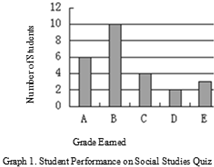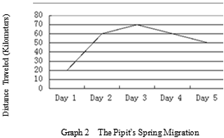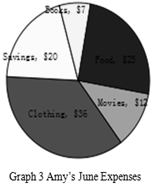题目内容
14.It was one of the hottest days of the dry season.We had not seen rain in almost a month.The crops were dying.Cows had stopped giving milk.The streams were long gone back into the earth.If we didn't see some rain soon we would lose everything.I was in the kitchen making lunch for my husband and his brothers when I saw my six-year old son,Billy,walking toward the woods.He was obviously walking with a great effort…trying to be as still as possible.Minutes after he disappeared into the woods,he came running out again,toward the house.
Moments later,however,he was once again walking in that slow purposeful long step toward the woods.This activity went on for over an hour:walking very carefully to the woods,then running back to the house.Finally,my curiosity got the best of me.I quietly walked out of the house and followed him on his journey.
He was cupping both hands in front of him as he walked; being very careful not to spill(洒出) the water he held in them.Branches and thorns slapped his little face but he did not try to avoid them.He had a much greater purpose.As I looked at him secretly,I saw the most amazing site.
Several large deer appeared threatening in front of him.But Billy walked right up to them.I almost screamed for him to get away.And I saw a baby deer lying on the ground,obviously suffering from heavy loss of water and heat exhaustion,lift its head with great effort to lap up the water cupped in my beautiful boy's hand.
I stood on the edge of the woods watching the most beautiful heart I have ever known working so hard to save a life.As the tears that rolled down my face began to hit the ground,they were suddenly joined by other drops…and more drops…and more.I looked up at the sky.It was as if God,Himself,was crying with pride.
25.Why did the author follow her son?C
A.Because there might be danger.
B.Because her son was doing a good deed.
C.Because she was curious.
D.Because she intended to help.
26.Which of the following statements is Not True according to the passage?D
A.Rain was in great need.
B.Billy carried water with his small hands.
C.Billy walked into the woods and then returned over and over again.
D.There were few trees in the woods.
27.Which is the correct order of the development of the story?A
①The author was moved to tears.
②Billy fed the water to the baby deer.
③Billy walked towards the large deer.
④It began to rain.
⑤The author followed Billy into the woods.
A.⑤③②①④B.③②⑤①④
C.④①③②⑤D.⑤②①③④
28.Which of the following is the best title for the passage?B
A.Importance of water B.The water of life
C.How to save animals D.Animals in danger.
分析 本文叙述了由于一个多月没有下雨了,眼看就要颗粒无收,这时作者看见自己的儿子多次想森林跑去很好奇,于是有一次就悄悄地跟去,发现儿子小心翼翼地端着水在拯救快要渴死的小鹿,作者想到自己就快没有水喝了,儿子却在给动物喝水,很是感动,这时也可能感动了老天,天开始下雨,他们高兴极了.
解答 25.C.细节理解题.根据第二段This activity went on for over an hour:walking very carefully to the woods,then running back to the house,可知是孩子小心翼翼地去往森林又回家的行为持续了一个小时,让我很好奇,故选C.26.D.细节理解题.A选项在第一段We had not seen rain in almost a month.The crops were dying,一个月没下雨,弄作为都要干死了,可知急需下雨,A正确,B选项由第四段He was cupping both hands in front of him as he walked; being very careful not to spill(洒出) the water he held in them,可知他小心地用手捧着水,B正确;C选项在第二段This activity went on for over an hour:walking very carefully to the woods,then running back to the house,可知是孩子小心翼翼地去往森林又回家,C正确,D选项未提及,故选D.
27.A.细节理解题.根据二、三段段意可知,作者看见自己的儿子多次想森林跑去很好奇,于是就悄悄地跟去,发现儿子小心翼翼地端着水走向几只大鹿,然后在拯救快要渴死的小鹿,作者想到自己就快没有水喝了,儿子却在给动物喝水,很是感动,这时,天开始下雨,故正确的顺序是53214,故选A.
28.B.标题归纳题.根据整篇短文都在围着水来讲,水拯救了小鹿,也拯救了大家,是生命之水,故选B.
点评 一般来说,标题归纳的格式是:以话题为中心,将控制性概念的词按一定的语法浓缩为概括主题句句意或中心思想的词组.做此类题时,要避免如下三种错误:一是概括不够.多表现为部分替代整体.二是过度概括.多表现为人为扩大范围.三是以事实、细节替代抽象的大意.

On a (42)A afternoon,everything changed.
Every once in a while,the sub-zero temperatures seal a(43)B windows shut.Drivers don't exactly enjoy having to stand outside in the cold,(44)C their orders into a speaker box,when they expect to drive through on their heated leather seats.In such cases,most customers tend to show their annoyance to the employees.
This woman was (45)D.
"I'll get the next car's(46)D as well,"she said as she came up to the window to pay.She stood outside,(47)C much snowon her hair.Though she was obviously freezing,her bright(48)B lit up her face like a fire.
"You can't(49)B their drinks,"I said,confused and tired.
"No,but I'll buy them,"she said."Pay it forward and all that."
Completely puzzled,I charged her as (50)B,and when the next customer arrived at the window I explained what had just hppened.I watched as his(51)B changed-first angry to be out in the cold,then (52)C at the random act of kindness,and finally,delighted by his(53)D.
"I suppose I'll pay for the next order then,"he replied,nodding and waving at the impatient driver(54)D him.He(55)C over the cash and received his pre-paid hot drink.
The trend continued.Customers arrived annoyed only to leave(56)B and pleased.Some were shocked to spend much more than they had expected,(57)A others ended up receiving their order for less than half the price.
Five vehicles passed,then ten,then twenty No one refused to pay.Customers stood at my window(58)B a fist-full of change to buy drinks for a complete stranger.Cars drove off,honking (鸣笛) and (59)B their thanks.
It only takes one customer,one person,to change the entire (60)C of traffic.It only takes one moment,one smile,to warm up even the coldest of days.
| 41.A.ears | B.hands | C.feet | D.back |
| 42.A.freezing | B.sunny | C.warm | D.usual |
| 43.A.truck's | B.vehicle's | C.car's | D.lorry's |
| 44.A.offering | B.throwing | C.screaming | D.cancelling |
| 45.A.polite | B.angry | C.popular | D.different |
| 46.A.number | B.coffee | C.fee | D.order |
| 47.A.covering | B.increasing | C.gathering | D.falling |
| 48.A.eyes | B.smile | C.hair | D.annoyance |
| 49.A.pay | B.take | C.buy | D.bring |
| 50.A.instructed | B.requested | C.directed | D.suggested |
| 51.A.gesture | B.expression | C.figure | D.feeling |
| 52.A.inspired | B.upset | C.surprised | D.disappointed |
| 53.A.turn | B.sense | C.deed | D.luck |
| 54.A.beyond | B.before | C.beside | D.behind |
| 55.A.took | B.looked | C.handed | D.thought |
| 56.A.shy | B.calm | C.anxious | D.regretful |
| 57.A.while | B.since | C.as | D.unless |
| 58.A.making | B.emptying | C.lying | D.holding |
| 59.A.explaining | B.sending | C.introducing | D.casting |
| 60.A.jam | B.row | C.flow | D.line |
Graphs can seem frightening,but reading a graph is a lot like reading a story.The graph has a title,a main idea,and supporting details.You can use your active reading skills to analyze and understand graphs like any other text.
Most graphs have a few basic parts:a caption or introduction paragraph,a title,a legend or key,and labeled axes.An active reader looks at each part of the graph before trying to interpret the data.Captions will usually tell you where the data from (for example,a scientific study of 400 African elephants from 1980 to 2005).Captions usually summarize the author's main point as well.The title is very important.It tells you the main idea of the graph by stating what kind of information is being shown.A legend,also called a key,is a guide to the symbols and colors used in the graph.Many graphs,including bar graphs and line graphs,have two axes that form a corner.Usually these axes are the left side and the bottom of the graph.Each axis will always have a label tells you what each axis measures.
| Bar Graphs A bar graph has two axes and uses bars to show amounts.In Graph 1,we see that the x-axis shows grades students earned,and the y-axis shows how many students earned each grade.You can see that 6 students earned an A because the bar for A stretches up to 6 on the vertical measurement.There is a lot of information we can get from a simple graph like this (See Graph 1) |  |
| Line Graphs A line graph looks similar to a bar graph,but instead of bars,it plots points and connects them with a line.It has the same parts as a bar graph---two labeled axes---and can be read the same way.To read a line graph,it's important to focus on the points of intersection rather than the line segments between the points.This type of graph is most commonly used to show how something changes over time.Here is a graph that charts how far a bird flies during the first five days of its spring migration (See Graph 2). |  |
Pie Graphs
A typical pie graph looks like a circular pie.The circle is divided into sections,and each section represents a fraction of the data.The graph is commonly used to show percentages; the whole pie represents 100 percent,so each piece is a fraction of the whole.A pie graph might include a legend,or it might use icons or labels within each slice.This pie graph shows one month's expenses(See Graph 3).
Food 25 Movies12 Clothing 36Savings20 Books $7

45.When used in a graph,a legend isA.
A.a guide to the symbols and colors
B.an introduction paragraph
C.the main idea
D.the data
46.What is the total number of students who earned a C or better?D
A.4.
B.6.
C.10.
D.20.
47.The bird covered the longest distance onC.
A.Day 1.
B.Day 2.
C.Day 3.
D.Day 4.
48.Which of the following cost Amy most?D
A.Food.
B.Books.
C.Movies.
D.Clothing.
| Advantages | Disadvantages |
| 1、良好的学习环境,更利于语言学习. 2、拓宽视野,学习国外先进的科学技术. 3、传播各民族间的不同文化. | 1、年纪小,缺乏生活经验,自理能力差. 2、情感孤独,思乡. 3、生活学习费用高. |
2.可适当增加细节,以使行文连贯.
3.开头已给出,不计入总词数.
Studying Abroad
In recent years,studying abroad has been popular.Tens of thousands of Chinese students have gone to foreign countries to study.
